Changing a bike tire might not seem like an especially important life skill, but if you ride a bike in any capacity, it’s a skill you should learn. No one ever plans on having their ride interrupted with a flat tire, but flat tires are one of those annoyances that every rider has the displeasure of experiencing at one point or another. By thinking ahead and taking some time to learn how to change a flat, the hassle of having to change a tire remains just that: an annoying interruption, but not the end of your ride.
If you want to successfully change your bike tire, then before even learning the “how” of it, you first need to know and collect the “what.”
In other words, you need to be prepared, which means having a fix-a-flat kit that you take with you on each ride. At the very least, you should include the basic materials required to effectively fix your flat; what you’ll need will depend on whether you’re riding tubeless or tubed.
Putting together a fix-a-flat kit might seem like an afterthought, but having one on hand might be the difference between a minor disruption to a ride and a major aggravation. If you end up with a flat, remember - always find a safe place, away from traffic and other possible dangers, before working on your bike.
The first step in changing a flat tire might seem obvious, but here it goes: remove the wheel.
If your tires are tubeless and you have a tubeless repair kit, then you might be able to skip this step. If the damage to the tire is a simple puncture, you can just plug it without taking the wheel off. However, if you find that the damage to the tire is extensive enough to where plugging it won’t resolve the issue, then the wheel will need to be removed. To remove the wheel from your bike, start by flipping it upside down.
Pro tip: You might find it easier to work on your bike when it’s upside-down. When flipping your bike, remove the computer from the handlebars to avoid scratching it.
Removing the rear wheel might seem intimidating at first, particularly when you realize that the chain and derailleur are located in the rear. However, the process of removing the back wheel isn’t much more difficult than removing the front, especially if you take your time. To begin, first shift the bike into the smallest sprocket, creating slack in the chain for easier wheel removal and installation. Raise the bike by the saddle and while pedaling with your hand, use the right shift lever to shift gears. Repeat this, using the left shift lever, so that the chain ends up on the smallest chainring in the front as well.
However, the process of removing the back wheel isn’t much more difficult than removing the front, especially if you take your time. To begin, first shift the bike into the smallest sprocket, creating slack in the chain for easier wheel removal and installation. Raise the bike by the saddle and while pedaling with your hand, use the right shift lever to shift gears. Repeat this, using the left shift lever, so that the chain ends up on the smallest chainring in the front as well.
While typical wheel removal requires that you open the brake if you’re addressing a flat tire, then it’s likely that the tire has already lost enough air so that it slides out easily. If your bike is equipped with disc brakes, then you’re in luck because the wheels can be removed without touching the brakes. Quick releases that hold the wheel in place are especially common. To loosen the wheel via quick release, pull - do not twist - the lever out and away from the frame until it is completely open. You should be able to remove the wheel with ease by carefully lifting the bike by its saddle and letting the wheel fall out.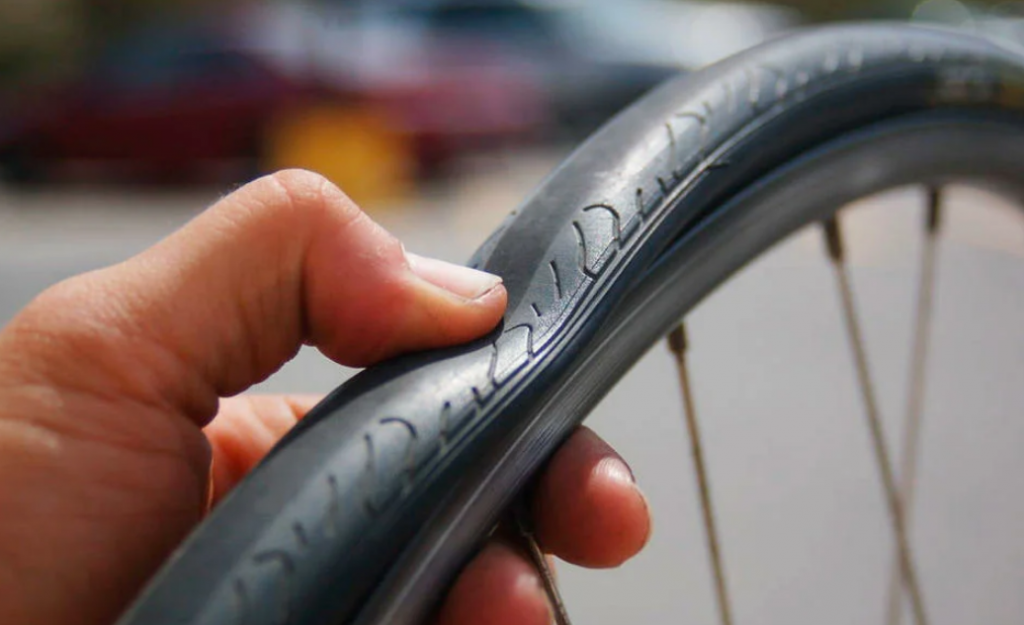 If it doesn’t fall on its own, hitting it with the palm of your hand gently should be enough to make it drop. If it still doesn’t come out, then check to make sure the chain and derailleur aren’t stopping it. If they are, lift your bike by its saddle and, while holding it up, reach around with your other hand to pull back the derailleur and consequently, the chain. Some derailleurs are equipped with a clutch, requiring that you release the clutch and then remove the axle. Push the derailleur cage towards the crank and let the wheel drop. At no point should you find yourself trying to force anything to move.
If it doesn’t fall on its own, hitting it with the palm of your hand gently should be enough to make it drop. If it still doesn’t come out, then check to make sure the chain and derailleur aren’t stopping it. If they are, lift your bike by its saddle and, while holding it up, reach around with your other hand to pull back the derailleur and consequently, the chain. Some derailleurs are equipped with a clutch, requiring that you release the clutch and then remove the axle. Push the derailleur cage towards the crank and let the wheel drop. At no point should you find yourself trying to force anything to move.
Once the wheel has been removed, it’s time to address the tire itself.
Standard tires are designed with an inner tube, which is inflated with air. While relatively inexpensive to replace, making them a popular option, tubes can be punctured or pinched flat relatively easily. Tubeless tires don’t have an inner tube and are instead equipped with an airtight rim that the tire snuggly rests in.
If you’re running tube, then you’ll need to remove it; if you’re running tubeless, you’ll need to patch it with a tire plug. Tire plug kits are sold at most reputable bike shops and consist of a strips of rubber and an insertion device, requiring no other equipment or changing out hardware. Most tubed tires can be converted to tubeless.
To remove the tire, you’ll need to use your tire levers. To do so, insert the flat end of the lever under the bead. Place a second lever under the bead and move along the rim until the tire is off. In most situations, you can reinstall the replacement or a patched tube without completely removing the tire. By breaking the bead on just one side, you will save a lot of time and greatly simplify the process.
While many would recommend you run your finger along the tire to search for the culprit of your flat, doing so could also result in you having to do some patchwork on your finger, too. If whatever punctured your tire is still there and it’s capable of piercing a bike tire, then your finger stands no chance against it. Before doing a hands-on analysis of the problem, visually inspect the tire, both inside and out, first. It might take longer, but you’ll be able to avoid a finger cut and maybe even a tetanus shot. You can also pack cotton pads or use something else to create a barrier between your finger and the sharp object that it might encounter, but there’s still a risk of injury . Tire levers are used for the removal of tires, but you can also run one along the tire for inspection purposes if you prefer playing it safe.
Before doing a hands-on analysis of the problem, visually inspect the tire, both inside and out, first. It might take longer, but you’ll be able to avoid a finger cut and maybe even a tetanus shot. You can also pack cotton pads or use something else to create a barrier between your finger and the sharp object that it might encounter, but there’s still a risk of injury . Tire levers are used for the removal of tires, but you can also run one along the tire for inspection purposes if you prefer playing it safe.
If both the visual and tactile inspections fail, reinflate the tire to see if you can hear the air leaking out of the puncture point. If you find only one puncture hole, then you’re most likely looking at road debris as being the culprit. Depending on the location and manner in which your tire has been punctured, a pointed tool, such as a screwdriver, can be used to push out the object in question before it works itself inward and creates additional punctures. If you see two holes next to each other, then it’s likely that you’re dealing with a pinch-flat, which means your flat wasn’t caused by road or trail debris; it was caused when the tube got itself pinched between the tire and rim.
Patching tubes is an excellent option for anyone who prefers pinching a few pennies, going green by reusing, or being resourceful when there are no more spares. Patch kits are available exactly for this purpose and come with everything you need need in order to get the job done. Patch kits also happen to be very compact so they are a perfect backup, even if you prefer to replace the tube outright.
If patching is your thing, then you’ll want to start by cleaning the affected area and then roughing the surface with an emery cloth or sandpaper. Kits come with two kinds of patches: glueless and those required glue. If your kit has glueless patches, then it’s basically like putting on a bandaid: peel off the backing, place it over the hole, and press with firm pressure. If your patches require glue, then simply add a thin layer of glue to both the tube and the patch. Once the glue has reached a tacky consistency, place the patch and press firmly until you’re sure it’s solidly in place.
There are some flats that are simply too severe to patch. In those circumstances, you’ll need to skip this step and simply install a new tube.
To install your tube, you’ll start by using your pump to inflate it just enough so that it obtains its form, making it easier for installation and reducing your chances of suffering a pinch-flat. Starting with the valve stem, put the tube on the rim and insert the stem straight through the valve hole. Carefully work the tire back onto the rim by rolling the bead away from yourself using your hands, not a lever; levers increase the likelihood of accidentally puncturing the replacement tube. Upon reaching the valve stem, wrap sides of the tire bead low into the rim and push up on the stem to get the tube into the tire.
Pro tip: if you align the branding on the tire with the stem, you’ll be able to locate the stem much quicker next time.
To avoid having to deal with another flat, it’s important that you take extra care to ensure that the tire bead isn’t pinching the tube. Do this by grabbing the tire with both hands and "massaging" and twisting it side-to-side as you work around the rim. This will ensure that the tube is positioned correctly inside the tire, away from the bead that can pinch it.
Do this by grabbing the tire with both hands and "massaging" and twisting it side-to-side as you work around the rim. This will ensure that the tube is positioned correctly inside the tire, away from the bead that can pinch it.
Now is when you find out whether or not your efforts paid off; it’s time to inflate your tire. To do this, you can use either a CO2 cartridge, a minipump, or both. Each method of inflation has its pros and cons, so ultimately, choose what’s most comfortable for you. If possible, equip yourself with both.
CO2 cartridges are highly effective, especially when your goal is to inflate to higher pressures, but they are a one shot deal, so there’s no reusing them. It’s a good idea to practice tire inflation at home using a CO2 cartridge to ensure that when the inevitable occurs, you don’t blow out your tube or waste the cartridge, and get left stranded. The key to using a CO2 cartridge is to ensure that the inflator is properly connected to the valve stem.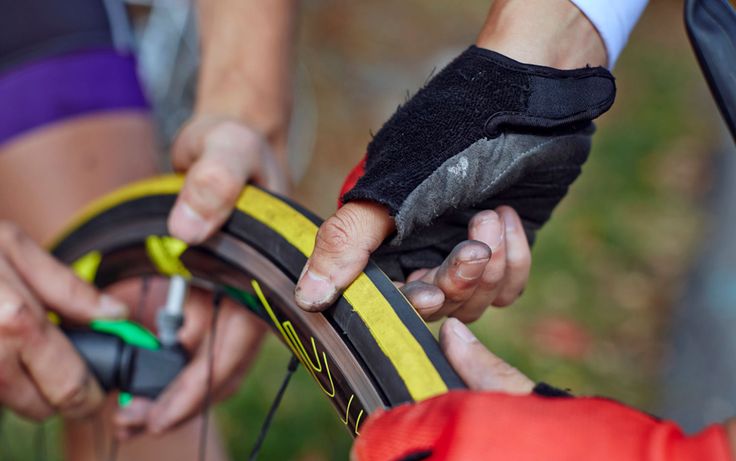
Having a minipump in your arsenal is highly recommended so that you always have a backup method for tire inflation, even if it’s not as easy to use as CO2 cartridge. Having a pump with a hose is also strongly suggested because it allows you to push the pump against the ground for better leverage, allowing you to accomplish higher pressures; pumps that attach directly to the valve stem don’t offer this advantage and might cause damage to the valve stem or even the rim when used improperly. Combination mini pump/CO2 inflators are also available.
As you’re inflating to your desired PSI, double and triple check the bead so that you’re sure it’s sitting in the rim correctly. Only after you’re certain that everything is in its proper place should you reattach your wheel.
Last but not least, it’s time to install the wheel. The processes of replacing the front and back wheels vary a bit, but neither is especially harder than the other, as long as you know how to effectively get the job done.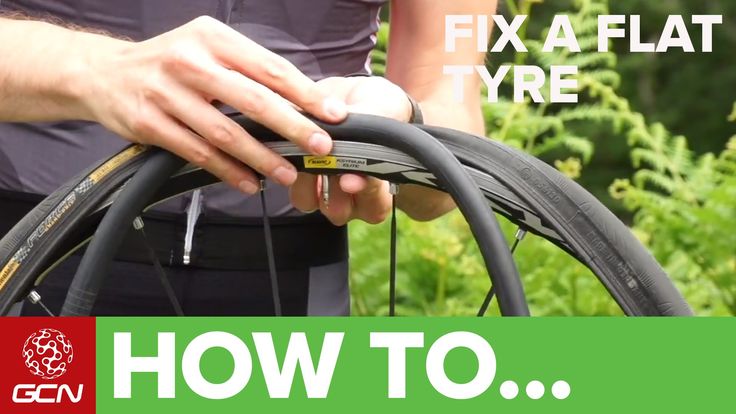
To attach the front wheel, first line up the fork dropouts with the axle of the wheel and gently lower the fork onto the axle. Carefully push down on the handlebar to check for the proper placement of the axle in the dropouts. It’s important to be mindful that the quick release or thru-axle lever is on the opposite side of the drivetrain and not touching the frame. Hold the quick release lever in place as you tighten the bolt. If you find that the lever closes too easily or ends up making contact with the frame, just open the lever and tighten the bolt a bit more. Be careful that you don’t over tighten the bolt, as it should be tightened just enough to allow you to use firm pressure when closing the quick lever. If your bike is equipped with rim brakes, don’t forget to reconnect, adjust, and check them for functionality.
If your flat occurred on the rear wheel, then lay the top of the chain around the smallest cog on the cassette and make sure the frame dropouts line up with the axle.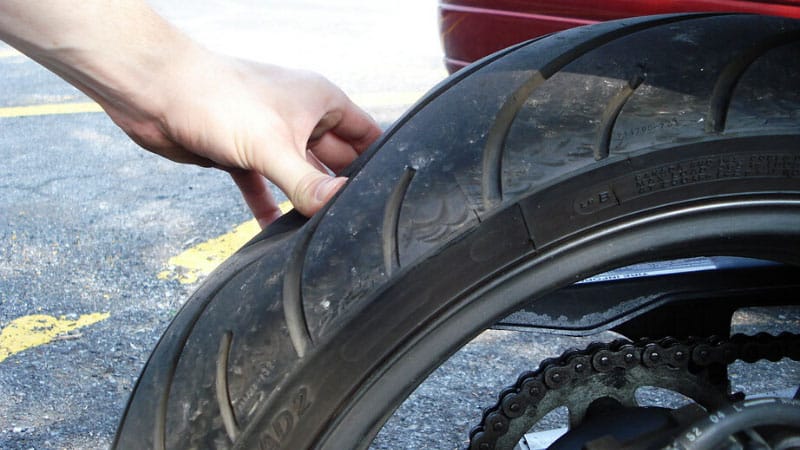 As you gently push the wheel back into the frame, take care to also pull the derailleur down and back so that it doesn’t get in the way. In the event that the wheel doesn’t go in easily, remove it and try again. If you’re sure that the wheel properly placed, then it’s time to close the quick release (and rim brakes if applicable) or insert the thru-axle into the frame and hub and thread it shut. The final test in determining whether your bike is ready to continue its journey is by lifting the rear wheel and spinning the cranks. If it runs smoothly, then you know you’re good to go.
As you gently push the wheel back into the frame, take care to also pull the derailleur down and back so that it doesn’t get in the way. In the event that the wheel doesn’t go in easily, remove it and try again. If you’re sure that the wheel properly placed, then it’s time to close the quick release (and rim brakes if applicable) or insert the thru-axle into the frame and hub and thread it shut. The final test in determining whether your bike is ready to continue its journey is by lifting the rear wheel and spinning the cranks. If it runs smoothly, then you know you’re good to go.
Flat tires are already unplanned and unexpected; planning ahead by prepping a fix-a-flat kit and learning how to change your tire can ease your mind for such unfortunate circumstances, but what do you do when even fixing your flat doesn’t go as planned? Read on for some quick, easy solutions when even flat tires don’t go your way.
Small, unfixable punctures.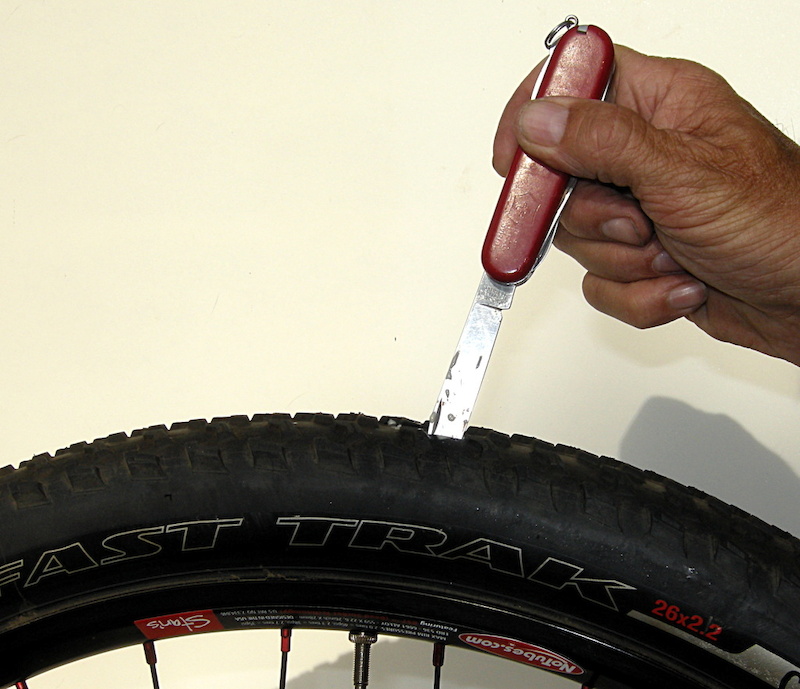 Super glue is already a life-saver in so many situations, so why should cycling prove to be any different? Super glue is a great quick fix for smaller punctures that might not be fixable otherwise, albeit temporary.
Super glue is already a life-saver in so many situations, so why should cycling prove to be any different? Super glue is a great quick fix for smaller punctures that might not be fixable otherwise, albeit temporary.
Large, unfixable punctures. If you find that you end up with a hole that’s simply too big to repair, then it’s time to resort to some out-of-the-box thinking. Cut out the damaged innertube section and tie the two ends together. It’ll be obvious to you that it’s not a perfect solution, but you should at least be able to reach about 50 psi, which is certainly enough until you can better resolve your tire situation.
Unfixable tire and sidewall gashes. In the event that your tire or the sidewall of your tire ends up sliced or gashed beyond standard repair, don’t despair; make a boot instead. Using a dollar bill, old gel wrapper, or piece of duct tape to cover the hole from the inside is a quick, easy way to resolve your emergency until you get home. It might not be ideal, but it should suffice until a more permanent resolution can be made.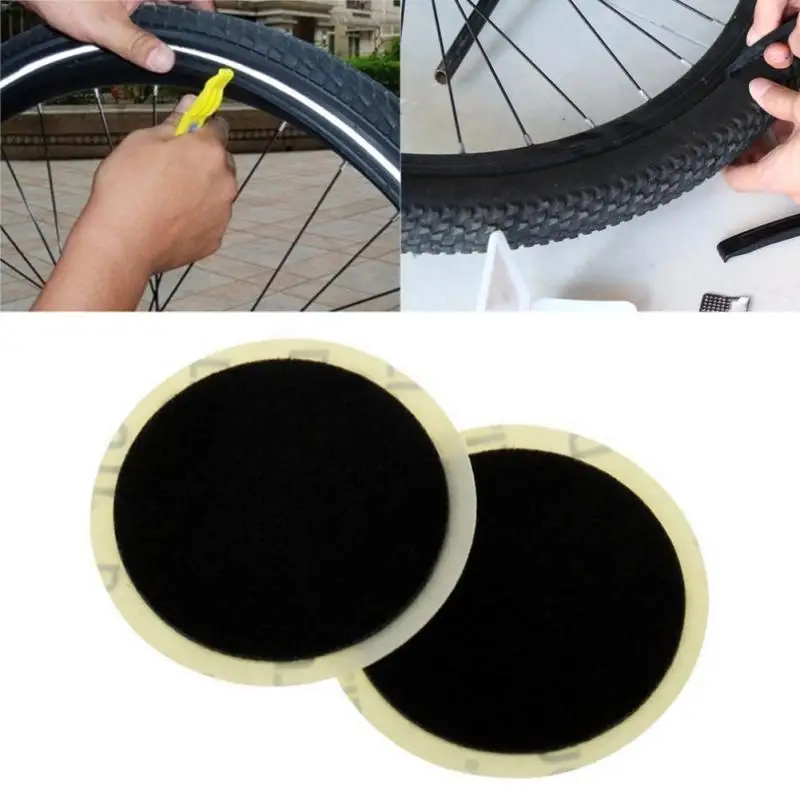
Learning the skill of bike tire repair can be thought of as a form of insurance: you might not want it and you might never use it, but if ever find yourself in a situation where you need it, you’ll be glad it’s there. The folks at Velosurance are all cyclists and understand that it’s only a matter of time before an unfortunate circumstance arises. From gap medical to liability, vehicle contact protection to even roadside assistance - for when you’ve got a flat and are fresh out of options - Velosurance offers a highly customizable policy to provide coverage for nearly any cycling associate risk. Whatever your needs, chances are, there’s a policy for you.
Changing a bike tire after getting a flat is a relatively easy fix—as long as you know how to handle it. Whether you ride on smooth pavement, rough gravel, or rocky singletrack trails, it’s bound to happen eventually, so you might as well prepare yourself with both the necessary tools and the bike repair knowledge you need address the problem.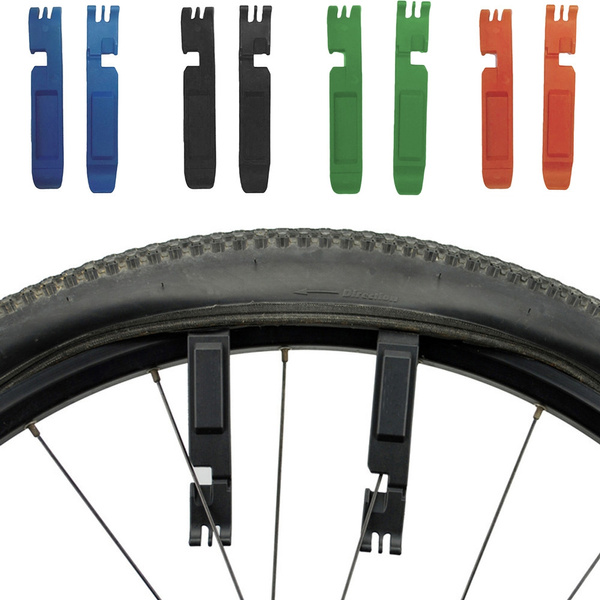
Below, we detail everything you need to know about how to change a bike tire, including the bike tire repair tips you need to succeed.
First things first though—for tools, you should always carry tire levers, a correctly-sized spare tube, and an inflation device, be it a mini pump or CO2 cartridge. You may also want to consider a patch kit or tire plug, which can come in handy for certain riders. And if you run tubeless tires, scroll down to skip to the tubeless section. When you’re ready to go, here’s your step-by-step guide.
Start by removing the wheel. Keep your bike upright, and if it’s a rear-wheel flat, shift your drivetrain into the hardest gear. If your bike has rim brakes, which many bikes still do, you may also need to loosen the brake.
Next, position yourself on the non-drive side of your bike (opposite the chain) and either open the quick release or unthread the thru-axle to remove the wheel.
Now you can remove the tire. Hook the rounded end of one tire lever under the bead (the outer edge) of the tire to unseat it. Fix the other end to a spoke to hold the lever in place and keep the unseated tire from popping back into the rim. Then hook the second lever under the bead next to the first, pushing it around the rim clockwise until one side of the tire is off. You don’t need to completely remove the tire.
Once the tire is loose, pull out the old tube (if applicable) and look for the source of the flat, which could be a thorn, piece of glass, or some other sharp object. Carefully run your fingers along the inside of your tire and rim, making sure nothing sharp is left behind; otherwise, you risk getting another flat. Also inspect the outside of the tire, again looking for any foreign object that might still be stuck in the rubber.
Also inspect the outside of the tire, again looking for any foreign object that might still be stuck in the rubber.
If you’re using tubes and want to do a little detective work, pump some air into the old one to find the leak. Two holes side by side indicate a pinch-flat, where the tube gets pinched between the tire and rim. A single hole is a sign that your flat was most likely caused by a sharp object. By lining the tube up with the tire using the valve as a point of reference, you can double check the area where the hole is to ensure the culprit is removed.
If you’re the thrifty type who likes to reuse old tubes, or if you’ve gotten multiple flats on your ride and have no more spares, then you can patch your tube with a patch kit. If you have a new tube, skip to the next section.
Start by cleaning the punctured area and roughing the surface with an emery cloth.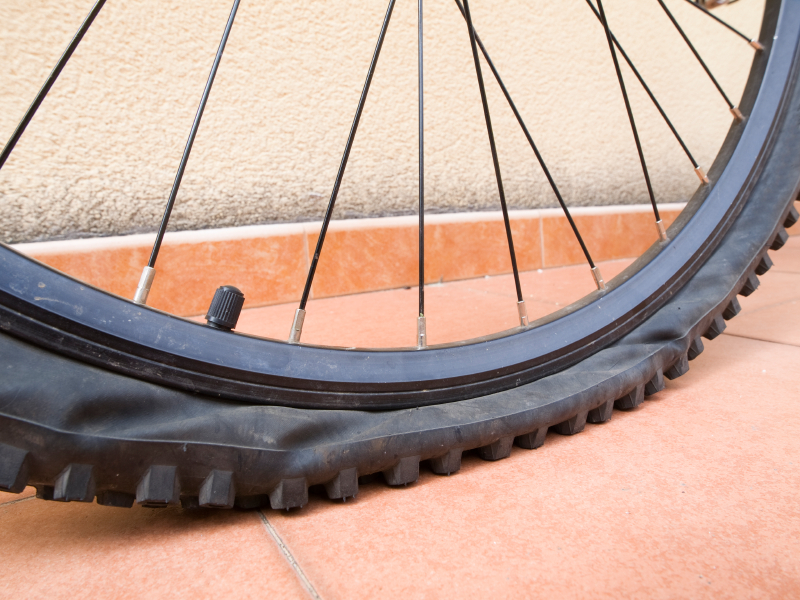 For a glueless patch, simply stick it over the hole and press firmly. For a patch that requires glue, add a thin layer of glue to the tube and patch. Wait for the glue to get tacky, then apply the patch and press firmly until it adheres.
For a glueless patch, simply stick it over the hole and press firmly. For a patch that requires glue, add a thin layer of glue to the tube and patch. Wait for the glue to get tacky, then apply the patch and press firmly until it adheres.
If you prefer to reuse old tubes or ran out of spares, you can try to patch the hole with a patch kit.
Katja Kircher//Getty ImagesNow inflate your new or patched tube just enough so that it holds its shape. This makes it easier to place inside the tire. Next, with the valve stem installed straight through the rim’s valve hole, position the tube inside the tire. Work the tire back onto the rim with your hands by rolling the bead away from yourself. Try not to use levers to reseat the tire, as you could accidentally puncture your new tube. When you get to the valve stem, tuck both sides of the tire bead low into the rim and push upward on the stem to get the tube inside the tire.
Check to make sure the tire bead isn’t pinching the tube by gently pushing the tire to the side as you work your way around the rim. Then inflate to the appropriate PSI and check that the bead is seated correctly.
$50 at Amazon
Credit: Silca$8 at Amazon
$6 at Amazon
Credit: Park Tool$40 at Walmart
Credit: REIIf everything looks good, reattach your wheel, making sure the quick release or thru-axle lever is on the opposite side of your drivetrain.
If you had a rear-wheel flat, lay the top of the chain around the smallest cog on your cassette and carefully push the wheel back into the frame. Close your quick release (and rim brakes if applicable) or insert the thru-axle back into the frame and hub and thread it closed.
Close your quick release (and rim brakes if applicable) or insert the thru-axle back into the frame and hub and thread it closed.
Finally, lift the rear wheel and spin your cranks once to make sure everything is back in place and operating smoothly. If all is good to go, get back on your bike and enjoy the rest of your ride.
Trevor Raab
For tubeless setups—all but standard in mountain biking and becoming increasingly popular on gravel, cyclocross, and even some road bikes—your sealant should do the trick without you even realizing it. Be sure to check your sealant regularly (about every three to six months) to make sure the tire has enough and that it hasn’t dried out.
But in the event of a bigger puncture or side-wall tear, you may need a tire plug to stop air loss. Plug kits come with a small strip of rubber and an insertion device, which allow you to plug the hole without even removing the wheel.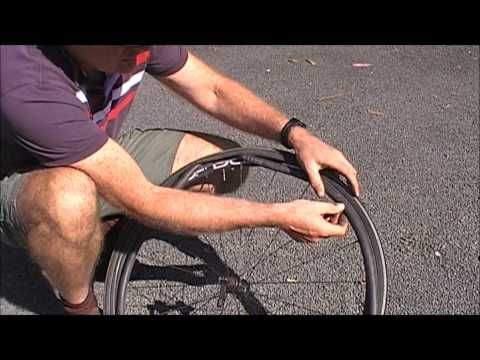 Once you find the puncture and insert the rubber plug, re-inflate your tire to the appropriate pressure to see that it’s holding air. If so, start riding again, and check the repair every so often to make sure it’s holding fast. You could also add more sealant, but you’d need to carry a valve core removal tool and a small bottle of sealant.
Once you find the puncture and insert the rubber plug, re-inflate your tire to the appropriate pressure to see that it’s holding air. If so, start riding again, and check the repair every so often to make sure it’s holding fast. You could also add more sealant, but you’d need to carry a valve core removal tool and a small bottle of sealant.
Trevor Raab
If air loss is coming from a puncture bigger than a plug fix, you could try a patch or a boot on the tire. But fair warning: It’ll likely be difficult to get a patch to adhere to your sealant-coated tire without thoroughly cleaning the area. Adding more sealant or a patch could create another problem, too, by letting all the air out and breaking the seal between the rim and tire. It’ll likely be difficult to reseat the tire bead onto the rim on the spot. The easiest way to ensure your tire holds air at this point is to simply use a spare emergency tube to get through the ride and address it at home or at a bike shop.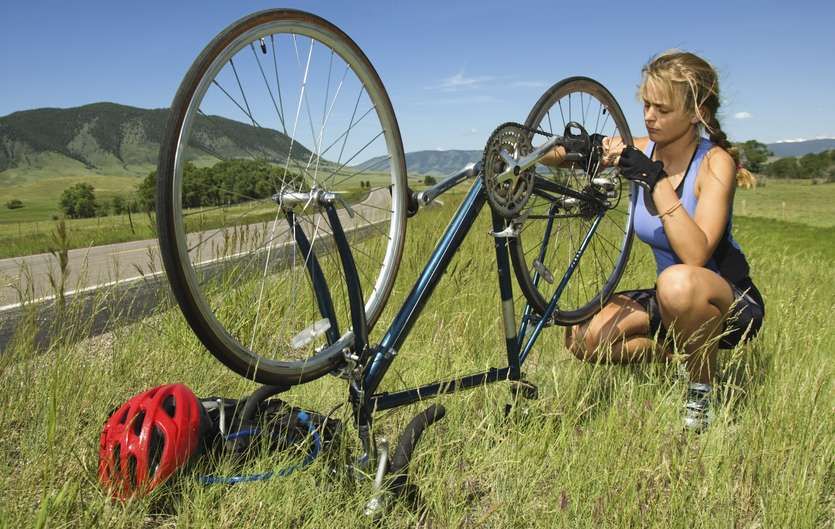
$155 at Trek Bikes
$70 at Amazon
Keep It Clean
$10 at notubes.com
Precisely measure sealant and install with no mess.
Mid-Ride Repair
$60 at dynaplug.com
Brass-tipped plugs make fixing bigger punctures easy.
Jessica Coulon
Service and News Editor
When she’s not out riding her mountain bike, Jessica is an editor for Popular Mechanics. She was previously an editor for Bicycling magazine.
This content is imported from OpenWeb. You may be able to find the same content in another format, or you may be able to find more information, at their web site.
The need for tire repair arises if the pressure in the cycle chamber is not kept, it drops at a noticeable speed.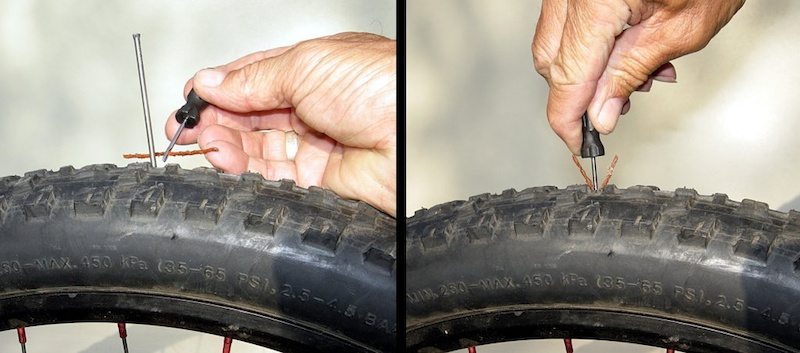 In this case, the rolling resistance of the wheel increases significantly, and the rim begins to hit the micro-roughness of the track. Unfortunately, from a puncture to
In this case, the rolling resistance of the wheel increases significantly, and the rim begins to hit the micro-roughness of the track. Unfortunately, from a puncture to
The need for tire repair arises if the pressure in the cycle chamber is not kept, it drops at a noticeable speed. In this case, the rolling resistance of the wheel increases significantly, and the rim begins to hit the micro-roughness of the track. Unfortunately, no cyclist is immune from a tire puncture. nine0003
Tire failures can be caused by manufacturing defects and mechanical damage. Mechanical damage includes cuts and punctures. The following damages are the result of manufacturing defects: stratification of the thread, rupture of the thread, rupture of the seam at the single-tube, delamination of the tread. A piece of wire, a sharp stone or a piece of glass, a nail, and the like can pierce the tire and the chamber. The chamber can be cut by the wheel rim when it hits an obstacle hard. Sand that has fallen under the tread will eventually lead to a hole in the bike chamber. If this happens far from home, during a trip or a tourist run, then you have to rely only on your own strength. With a certain skill, it is possible to repair the bicycle wheel chamber in 15-30 minutes. To do this, you must have at least a complete first-aid kit. However, of course, only in the workshop will they be able to guarantee a high-quality result of the repair. nine0003
Sand that has fallen under the tread will eventually lead to a hole in the bike chamber. If this happens far from home, during a trip or a tourist run, then you have to rely only on your own strength. With a certain skill, it is possible to repair the bicycle wheel chamber in 15-30 minutes. To do this, you must have at least a complete first-aid kit. However, of course, only in the workshop will they be able to guarantee a high-quality result of the repair. nine0003
Procedure for repairing the inner tube
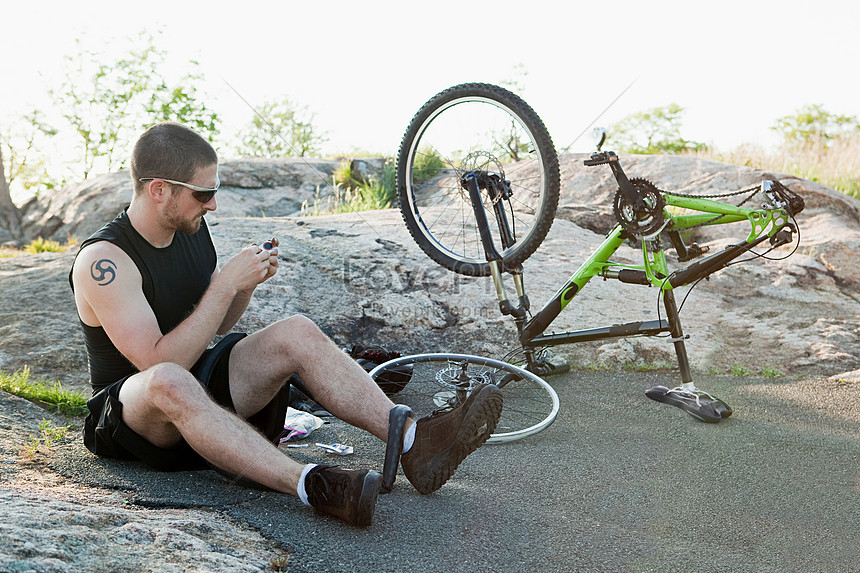 nine0018
nine0018 Depending on the nature of the damage, the repair of bicycle tires may have a different procedure.
Sport mountain bikes with tubeless tires are very popular. These are UST and BST wheels. The peculiarity of such wheels is that compressed air is pumped directly into the cavity between the tire and the rim. The most widely used wheels of the BST standard. They must use a sealant that ensures tight contact between the rim and the tire. The same sealant also seals possible punctures directly in the movement of the bicycle. At the same time, high-quality repair of a tubeless bicycle tire can be carried out in a stationary or mobile workshop. This is not easy to do in the field. Poor repair of a bicycle tire can lead to the fact that when the wheel slips sideways, the tire can fly off, and the consequences can be very serious. nine0003
The same sealant also seals possible punctures directly in the movement of the bicycle. At the same time, high-quality repair of a tubeless bicycle tire can be carried out in a stationary or mobile workshop. This is not easy to do in the field. Poor repair of a bicycle tire can lead to the fact that when the wheel slips sideways, the tire can fly off, and the consequences can be very serious. nine0003
In our bike workshop you can repair not only traditional tires and tubes, but also repair tubeless mountain bike tires. We carry out scheduled preventive maintenance of bicycles, we make repairs with a guarantee.
Tire failures can be caused by mechanical damage and manufacturing defects. Mechanical damage includes punctures and cuts caused by foreign bodies that have entered the tire. The following damages are the result of manufacturing defects: stratification of the thread, rupture of the thread, rupture of the seam at the single-tube, delamination of the tread.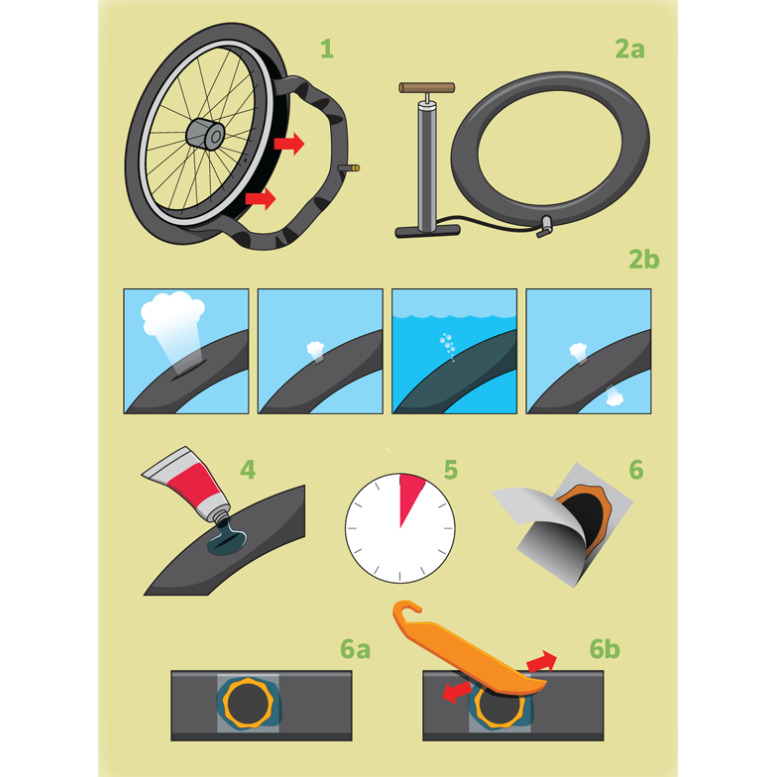 nine0003
nine0003
Significant damage penetrating the outer surface of the tire is easily detected by inspection. Other damage is determined by inspecting the tire after it has been removed from the wheel rim. To speed up the location of small punctures, in which the air from the chamber is released gradually, the tire mounted on the wheel is immersed in water. At the puncture site, traces of air escaping from the tire will be visible. It is necessary to immerse not the entire wheel in water, but only part of the tire so that the surface of the water barely covers the inner surface of the rim. nine0003
Having found the place of the puncture, mark it on the tire with an indelible pencil, remove one edge of the tire from the rim and remove the chamber from under the tire. Having slightly pumped up the chamber, they find the puncture site by ear or by immersion in water and mark it with a pencil, and the chamber is freed from air. At the puncture site, the surface of the chamber is cleaned with a rasp, a file with a large notch or sandpaper with a large grain. On a separate piece of rubber 1-1.5 mm thick (cut from the old chamber), a surface equal to the section of the cleaned surface of the chamber is cleaned, and a patch is cut out of it with scissors, giving it a round or oval shape. From the camera and the patch, remove the dust and traces of emery remaining after stripping with a brush or a clean rag. A thin layer of rubber adhesive is applied to the surface of the chamber and the patch. The glue is allowed to dry for 15-20 minutes, and then a second layer is applied, which is also allowed to dry. After drying, the patch is applied to the damaged area of the camera, pressed tightly and rolled with a roller or lightly pierced with a wooden hammer, placing the camera on the palm of the hand. nine0003
On a separate piece of rubber 1-1.5 mm thick (cut from the old chamber), a surface equal to the section of the cleaned surface of the chamber is cleaned, and a patch is cut out of it with scissors, giving it a round or oval shape. From the camera and the patch, remove the dust and traces of emery remaining after stripping with a brush or a clean rag. A thin layer of rubber adhesive is applied to the surface of the chamber and the patch. The glue is allowed to dry for 15-20 minutes, and then a second layer is applied, which is also allowed to dry. After drying, the patch is applied to the damaged area of the camera, pressed tightly and rolled with a roller or lightly pierced with a wooden hammer, placing the camera on the palm of the hand. nine0003
If the chamber has large gaps that are difficult to seal; the best way is to repair by inserting a piece of the old chamber with the same cross-sectional profile. To do this, a piece with a length of at least 120 mm is cut out from the repaired chamber, on which there is a gap. A piece 60–100 mm longer is also cut out of the old chamber (an allowance of 30–59 mm for each joint).
A piece 60–100 mm longer is also cut out of the old chamber (an allowance of 30–59 mm for each joint).
Gluing joints is most conveniently done using two mandrels, which are (Fig. 68 a) segments of a thin-walled steel pipe, the diameter of which is selected so that the chamber to be glued is put on the mandrel with a slight tension. The length of each mandrel is taken equal to 80-100 mm. The wall of the mandrel is cut through along the generatrix of the cylinder. nine0003
The end 1 of the rubber tube of the mating chamber is first passed inside the mandrel 2, and then turned inside out and pulled on the mandrel so that the latter is under the lapel. The same is done with the end 6 of the inserted piece of the chamber and the second mandrel 7. (Fig. 68 b). The end of the chamber, which will be internal after gluing, is turned out again with the outer surface up.
Fig. 68. Docking chamber
The length of the lapels must be equal to the allowance provided for gluing. nine0003
nine0003
The outer surface 3 of the first end and the turned-out inner surface 4 of the second end of the chamber are thoroughly cleaned. An even layer of rubber adhesive is applied to the cleaned surfaces, and after drying, a second layer is applied, which is also allowed to dry for 15-30 minutes. After that, the ends of the chamber and the insert are joined end-to-end, and with the help of a thin wooden plate 5 placed under the lapel of the rubber tube, it is carefully turned back so that it lies on the surface of the second end smeared with glue over the entire area without folds or wrinkles. When the gluing process is completed, one end of the rubber tube will be inside the other. The place of gluing is pressed by hand. nine0003
After gluing the first joint, the mandrels are removed and the second joint is glued in the same way, connecting the chamber into a closed ring. After that, the mandrels are easily removed from the chamber due to the cut of the wall.
If the puncture hole is large and several threads of the tire thread are damaged, the hole in the latter must be sealed.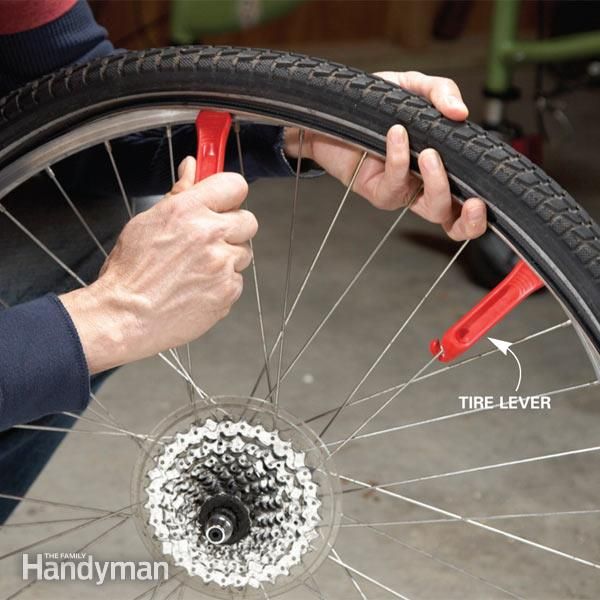 The patch in this case is made of rubberized fabric, which is available in the bike kit. On the damaged area on the inside of the tire, the surface is cleaned with sandpaper, several layers of rubber glue are applied at intervals of 15-20 minutes to dry. After that, a patch smeared with glue and dried is also applied to the place of damage and it is well rolled to the tire. nine0003
The patch in this case is made of rubberized fabric, which is available in the bike kit. On the damaged area on the inside of the tire, the surface is cleaned with sandpaper, several layers of rubber glue are applied at intervals of 15-20 minutes to dry. After that, a patch smeared with glue and dried is also applied to the place of damage and it is well rolled to the tire. nine0003
In case of significant cuts in the tire, it is best to repair it by hot vulcanizing in the workshop that performs this work.
Repairing a damaged racing single tube is somewhat different from repairing a road tire and requires more care and attention. It is not recommended to submerge the racing single tube in water to find the puncture site. The puncture is determined by ear or, if this is not possible, soap foam is prepared, as for shaving (only not hot), and applied with a brush to the sides of the single-tube along the entire circumference; Foam will begin to bubble at the puncture site. The puncture site is noticed, and the foam is removed from the sides of the tire with a dry cloth.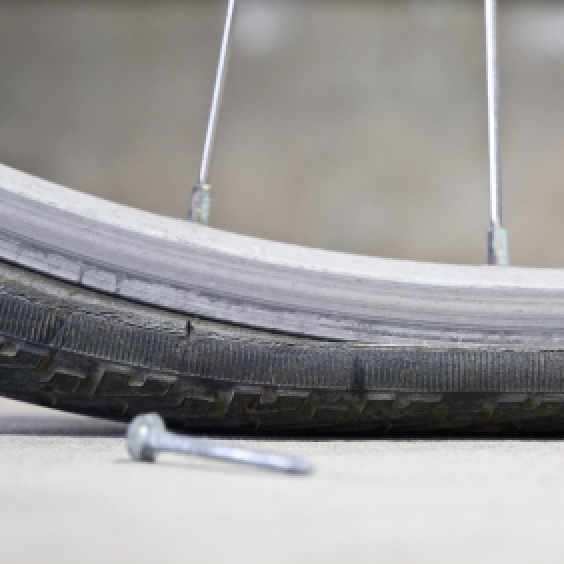 nine0003
nine0003
The single tube is emptied of air and removed from the rim. To remove the chamber from the tire, you need to carefully tear off the keeper tape glued to it from the tire frame, which closes the butt seam. The tape is torn off the tire in a fairly significant area. Being careful not to cut through the chambers, cut the threads of the butt weld; the incision is made so long that you can freely remove the camera. After that, the edge of the safety tape is undercut so that it is possible to freely remove the camera and repair it. nine0003
Damaged tire carcass fabric must be sealed during a puncture, otherwise the thin wall of the chamber, drawn into the puncture hole in contact with the road surface on which the wheel moves, will be pinched or rubbed. The puncture hole in the tire frame is sealed with a piece of bicycle thread from an old single tube; you can also seal the hole with a dense canvas from a parachute or balloon.
The method of sealing a racing tire tube is the same as the described method of sticking a road tube, but since the thickness of the walls of the tube and the patch is only about 0.